The London Mason in the Seventeenth Century by Douglas Knoop offers a comprehensive examination of the lives and work of masons in the bustling city of London during the seventeenth century.
The book delves into the intricacies of their craft, the socioeconomic and political forces that influenced their profession, and the role they played in shaping the architectural landscape of London.
The London Mason in the Seventeenth Century
Author: Knoop, Douglas
The book begins with an introduction to the masonry trade during the seventeenth century. Knoop provides readers with a detailed account of the working conditions, tools, and techniques employed by London masons, shedding light on the craftsmanship and dedication required to excel in this profession.
He explains the different types of masons, from the freestone masons who specialized in decorative carving and intricate details, to the rough masons who focused on the structural aspects of buildings.
Following this, Knoop delves into the organizational structure and hierarchy within the masonry trade.
He explores the role of the Master Mason, who was responsible for overseeing the construction process and managing the workforce, as well as the apprentices and journeymen who made up the majority of the labor force.
Knoop also discusses the evolution of the guild system, which served to regulate and protect the interests of masons, ensuring the quality of their work and providing support in times of need.
One of the most engaging aspects of the book is its exploration of the cultural and artistic influences on masonry during this period.
Knoop traces the development of architectural styles in seventeenth-century London, discussing the prevalence of Gothic, Renaissance, and Baroque styles, and how these styles were adapted and integrated by London masons.
He also delves into the impact of foreign craftsmen and architects who arrived in London during this period, bringing with them innovative ideas and techniques that shaped the city’s architectural landscape.
Knoop devotes a significant portion of the book to examining the masons’ involvement in some of the most iconic building projects of the seventeenth century.
He provides detailed case studies of the construction of St. Paul’s Cathedral, the rebuilding of the city after the Great Fire of London, and the development of various palaces, churches, and public buildings.
Through these case studies, Knoop demonstrates the masons’ adaptability and skill in responding to the changing needs and tastes of the time.
Another major theme in the book is the relationship between masons and the wider society in seventeenth-century London.
Knoop delves into the economic factors that influenced the demand for masonry work, such as the population growth, urbanization, and the emergence of a wealthy merchant class who commissioned grand buildings as a display of their social status.
He also explores the masons’ interactions with other trades and professions, revealing a complex web of cooperation, competition, and interdependence.
Knoop does not shy away from addressing the darker aspects of the masonry trade, including the exploitation of workers, conflicts within the guild system, and the impact of political and religious upheaval on the masons’ livelihoods.
He provides a balanced and nuanced account of the challenges faced by London masons, acknowledging both their resilience and vulnerability.
The book also explores the role of the masons in the broader social and cultural life of seventeenth-century London.
Knoop discusses the masons’ involvement in the city’s vibrant social scene, from their participation in public events and festivals to their membership in various clubs and societies.
He also delves into the intellectual and artistic pursuits of the masons, highlighting their contributions to the fields of mathematics, geometry, and the burgeoning field of architectural theory.
Towards the end of the book, Knoop examines the legacy of the seventeenth-century London masons, exploring the ways in which their craftsmanship and architectural contributions have endured over time.
He discusses the preservation and restoration efforts of numerous buildings and monuments that were constructed during this period, emphasizing the significance of these structures in both the architectural history of London and the broader cultural narrative of the city.
Knoop also reflects on the influence of seventeenth-century masonry techniques and styles on subsequent generations of craftsmen and architects, demonstrating the lasting impact of their work on the evolution of London’s built environment.
In conclusion, “The London Mason in the Seventeenth Century” by Douglas Knoop offers a thorough and engaging exploration of the lives, work, and cultural significance of masons in seventeenth-century London.
Through a combination of historical research, architectural analysis, and social commentary, Knoop provides readers with a vivid and nuanced portrait of the masons who played a central role in shaping the city’s architectural landscape.
The book serves as a valuable resource for historians, architects, and anyone interested in the history of London or the fascinating world of masonry during this transformative period in the city’s past.
Recent Articles: in this series
 Book Intro: The Secret Doctrine Explore the profound synthesis of science, religion, and philosophy in H.P. Blavatsky's "The Secret Doctrine." Discover the true depth of Theosophy beyond the oversimplified term "Esoteric Buddhism" and uncover the universal wisdom that transcends religious boundaries. A compelling introduction to Theosophical literature and its broader, esoteric truths. |
 Book Intro - The craftsman and freemason's guide Dive into the enigmatic world of Freemasonry with Cornelius Moore's comprehensive guide. Uncover the symbolic rituals, trace the fraternity's historical roots, and gain a deeper understanding of this age-old society. Perfect for Freemasons and curious readers alike. Unlock the secrets of Freemasonry today! |
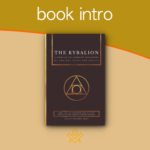 Unravel the secrets of the ancient Egyptian wisdom with our comprehensive guide to the Kybalion, by Three Initiates. Discover its influence on modern thought, the controversies surrounding it, and its seven profound Hermetic principles. Unlock the power of these timeless teachings to transform your understanding of life's mysteries. |
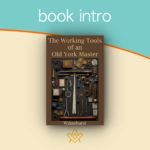 Book Intro - The Working Tools of an Old York Master by Wilmshurst Unlock the Secrets of Freemasonry! Dive into the profound symbolism of 'The Working Tools of an Old York Master.' Discover the hidden meanings behind the square, compass, plumb line, and more. Embark on a transformative journey of personal growth and spiritual enlightenment. Uncover the ancient wisdom that has shaped generations of Masons. |
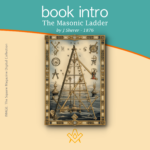 Book Intro - The Masonic Ladder by J Sherer Unlock the mysteries of Freemasonry with "The Masonic Ladder" by J. Sherer - - 1876. This 19th-century guidebook takes readers on a journey through the steps of the Masonic ladder, from the basic principles of the Entered Apprentice to the highest degree of the Sovereign Grand Inspector General. Discover the symbolism, allegory, and values of Freemasonry in this timeless classic. |
 Book Intro - The London mason in the seventeenth century The London Mason in the Seventeenth Century by Douglas Knoop offers a comprehensive examination of the lives and work of masons in the bustling city of London during the seventeenth century. The book delves into the intricacies of their craft, the socioeconomic and political forces that influenced their profession, and the role they played in shaping the architectural landscape of London. |
 Book Intro - History of Freemasonry, Gould, Robert Freke The History of Freemasonry is a comprehensive overview of the origins, development, and evolution of Freemasonry from its ancient roots to the modern era. The book explores the fascinating history of one of the oldest and most mysterious organisations in the world, which has been the subject of much speculation and curiosity over the centuries. - by Robert Freke Gould |
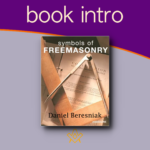 Book Intro - Daniel Beresniak Symbols Of Freemasonry This book is a collection of the symbolic images which Freemasons encounter on their journeys of transformation.' The texts and illustrations form an intimate dialogue whose subject is Freemasonry, and which casts light on the relationship between dreams and reality, reason, intuition and imagination. |
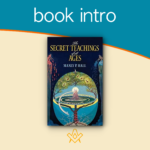 Book Intro - The Secret Teachings of All Ages by Manly P Hall The Secret Teachings of All Ages by Manly P Hall is a comprehensive and in-depth exploration of the various esoteric and occult traditions that have shaped human history. The book covers a wide range of subjects including alchemy, astrology, mysticism, and secret societies, and provides detailed explanations of the underlying principles and concepts. |
 Book Intro - Duncan's Masonic Ritual and Monitor Duncan's Masonic Ritual and Monitor is an impression of the Old York Rite published in New York in 1866. |
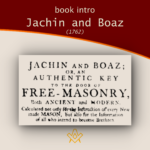 Book Intro - Jachin and Boaz (1762) Thirty two years after Samuel Prichard's Masonry Dissected (1730) a second detailed exposure was published Jachin and Boaz (1762) attributed to the same author, and met with equal distain by Freemasons of the time. However, these exposures offer the masonic historian an invaluable view in to how freemasonry was conducted during its early formation |
 Book Intro - Three Distinct Knocks (c.1760) Giving an exact account of all their proceedings in making a brother, with the three obligations or oaths belonging to the first second, and third degrees of masonry, viz. The entered apprentice, fellow-craft, and master-mason: with the obligating on belonging to the chair, and the grip and word. |
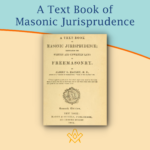 Book Intro - A Text Book of Masonic Jurisprudence An introduction to Albert Mackey's seminal work on Masonic Jurisprudence – the theory or philosophy of Masonic law. The Foundations of Masonic Law are to be found in the Landmarks, or Unwritten Law, and in the Ancient Constitutions, or the Written Law. These constitute the subject matter of the book. |
 Book Intro - The Perfect Ceremonies Of Craft Masonry 1871 A beautiful example of a the rituals, produced in a Medieval illuminated script style. Facsimiles still exist of this illustrated ritual book, of which the most authentically produced version is that available from the Scottish Rite Masonic Book Club. |
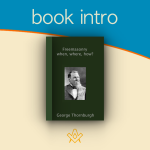 Book Intro – Freemasonry; when, where, how? Introduction to Freemasonry; when, where, how? By George Thornburgh |
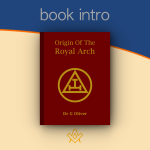 Book Intro - Origin Of The Royal Arch An introduction to the Origin of the Royal Arch, through the eyes of the English nineteenth century masonic author Dr G Oliver (1782–1867) |
 Book Intro – Symbolical Masonry Symbolical Masonry is a treasure-house of Masonic lore, including discussions of key concepts of the first three degrees, along with an extensive study guide. |
 This month we look at – 'A portrait gallery, with biographical sketches of prominent freemasons throughout the United States' |
 Extracted and abridged from The Mystic Tie: Or, Facts and Opinions, Illustrative of the Character and Tendency of Freemasonry By Albert Mackey, |
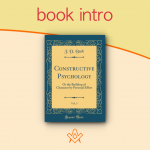 Book intro - Constructive Psychology The introduction to Constructive Psychology or The Building Of Character By Personal Effort by J D Buck a masonic author |
 book intro - Cagliostro: the splendour and misery of a master of magic Preface to the book by William Rutherford Hayes; Cagliostro: the splendour and misery of a master of magic |
 book intro - Origin of the Rosicrucians and the Free-Masons Historico-Critical Inquiry into the Origin of the Rosicrucians and the Free-Masons – Thomas De Quincey |
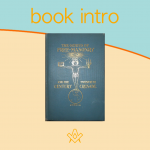 Book Intro - The Genius of Freemasonry The Genius of Freemasonry: “Has any brother anything to offer for the good of Masonry?” The following pages are the author’s answer to that question. |
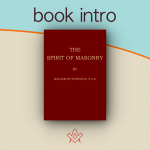 Book Intro - The Spirit of Masonry An essential source for anyone interested in exploring the inner mysteries of the Masonic Fraternity. |
 Book intro - History of Freemasonry Introduction to a classic masonic book by J. G. Findel, History of Freemasonry published 1866 |
 The Book of Constitutions for the Ancient Grand Lodge or Ahiman Rezon |
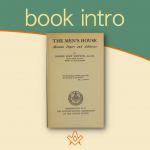 A short introduction to The Men's House, a collection of masonic papers and addresses |
 This is a general survey of Masonic origins, history and philosophy. It was at one time given to every new Mason in Iowa. |
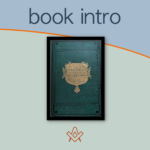 Book Intro - The Discrepancies of Freemasonry Written almost 150 years ago, this book contains wisdom still relevant today. |
 Book Intro - The Principles of Masonic Law "The first great duty, not only of every lodge, but of every Mason, is to see that the landmarks of the Order shall never be impaired". |
 Published in 1911, this fascinating book is equally relevant for the 21st century Mason with an interest in the more mystical side of Freemasonry. |
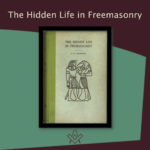 Book Intro - Hidden Life of Freemasonry Introduction to The Hidden Life in Freemasonry (1926) by Charles Webster Leadbeater |
 Book Intro - The Symbolism of Freemasonry Introduction to a classic masonic book; The Symbolism of Freemasonry: Illustrating and Explaining Its Science and Philosophy, its Legends, Myths and Symbols. |
 Book Intro - The Meaning of Masonry This is the Introduction to The Meaning of Masonry, a set of essays which discuss the esoteric side of Masonry |
 Book Intro - Illustrations of Masonry Introduction to Illustrations Of Masonry by William Preston (1742-1818) |
masonic knowledge
to be a better citizen of the world
share the square with two brothers

click image to open email app on mobile device







